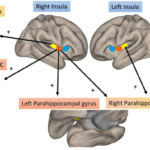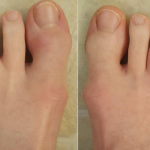
Image Credit: MariesImages/shutterstock.com
As the literature on comorbidities linked to psoriatic arthritis (PsA) expands, it’s becoming more difficult for clinicians to keep up with what comorbidities should be assessed and how these comorbidities affect treatment selection. Given this, rheumatologists at the Perelman School of Medicine at University of Pennsylvania, Cleveland Clinic and Hospital for Special Surgery in New York set out to provide an update that could be applied in clinical practice. Their findings were recently published in Current Opinion in Rheumatology.
Leading author Alexis Ogdie-Beatty, MD, Division of Rheumatology, Center for Clinical Epidemiology and Biostatistics, Center for Pharmacoepidemiology Research and Training, Perelman School of Medicine at the University of Pennsylvania, Philadelphia, says it is important to focus on the entire clinical picture when treating patients with PsA because the condition is not just a disease of the joints and skin. “Comorbidities need to be considered in order to provide the patient with the best care possible,” she says.
According to the review, “over half of patients with PsA have more than one comorbidity; this has a significant impact on quality of life.”1

Dr. Ogdie-Beatty
Commenting on the review, Eric M. Ruderman, MD, professor of medicine, Division of Rheumatology, Northwestern University Feinberg School of Medicine, Chicago, says, “Focusing treatment on only a single aspect of the associated disease spectrum risks ignoring issues that may have significant impact on patient function and, worse, may lead to potentially avoidable long-term negative outcomes.”
This doesn’t mean that if a patient is diagnosed with PsA that he or she should be immediately screened for comorbidities, however. “Sometimes the first visit with a patient who is just being diagnosed with PsA is already overwhelming with the workup for inflammatory arthritis, the discussion about potential therapies and the screening tests needed for therapies,” Dr. Ogdie-Beatty says. “A thorough history and review of systems should be performed for all patients, and then—once the dust settles from the initial diagnosis—screening measures for comorbidities should be performed.”
Patients may not realize that there can be a relationship between PsA & eye disease.

Dr. Husni
Co-author M. Elaine Husni, MD, MPH, vice chair, Cleveland Clinic Arthritis and Musculoskeletal Treatment Center, Orthopaedic and Rheumatologic Institute, agrees. “You first want to get their disease under good control. Then subsequent visits can focus on screening for comorbidities.” Rheumatologists may prefer to administer this process, given their training in internal medicine, or they may refer the patient to different specialists for testing.
Regardless of who performs the testing, communicating with the patient and the patient’s primary care physician about medical comorbidities associated with PsA is critical.
“Patients should be aware of the association with cardiovascular disease in particular so that they are empowered to participate in their own care and advocate for routine screening with their primary care physician,” Dr. Ogdie-Beatty says. “It is equally important for a rheumatologist to communicate with the patient’s primary care physician because most are unable to keep up with the literature in the many areas of medicine. Thus, we need to inform them of what they should be watching for, partner with them in performing screening tests and stay on the same page with regard to PsA management.”
Notable Comorbidities
Among the 13 comorbidities highlighted in the review, cardiovascular disease and diabetes may have the greatest impact on a patient’s life, Dr. Ogdie-Beatty says, so it’s worth paying the closest attention to these conditions. Additionally, there are existing screening guidelines for the general population for these diseases that either the rheumatologist or the primary care physician can facilitate.
Dr. Husni also would advise patients to see an ophthalmologist if they experience symptoms, such as eye dryness, redness, pain or vision loss. “Patients may not realize that there can be a relationship between PsA and eye disease,” she says.
In addition, Dr. Ruderman says it’s important to focus on the comorbidities that are both very common and potentially treatable, notably hyperlipidemia and atherosclerosis, diabetes, obesity and depression. “Recognizing those diseases, such as uveitis and inflammatory bowel disease, that are as much associated conditions as comorbidities, is also very important,” he continues.
Elinor A. Mody, MD, director, Women’s Orthopedic and Joint Disease Program, Brigham and Women’s Hospital, Boston, who also commented on the review, singled out depression as a comorbidity to watch for. “This is a condition that we aren’t as good at screening for,” she says. “So be sure to alert the patient’s primary care physician if you don’t screen for it yourself.” Psoriasis is associated with increased risk of suicide and alcoholism.
Rethinking Treatments
Being aware of comorbidities is crucial when prescribing medications. In particular, nonsteroidal antiinflammatory drugs (NSAIDs) should be prescribed with caution in patients with PsA and certain other conditions. NSAIDs can cause elevated liver transaminases (particularly in the setting of existing liver disease); may cause flares in Crohn’s disease and ulcerative colitis; may increase the risk of cardiovascular events, such as stroke or myocardial infarction, in patients with existing cardiovascular disease; may cause fluid retention or decompensation in congestive heart failure; and may be problematic in patients with chronic kidney disease because they are linked to increased risk for acute kidney injury or worsening kidney disease.
If any of these conditions exist, clinicians may choose to prescribe a low dose of NSAIDs with careful monitoring of kidney function and blood pressure. But it’s also important to talk to the patient’s gastroenterologist or cardiologist before prescribing NSAIDs and to discuss these risks with the patient.
Looking ahead, Dr. Ogdie-Beatty says additional data are needed to quantify some of the risks in PsA compared to the general population and research is needed on how to better screen for and manage these conditions in PsA.
Karen Appold is a medical writer in Pennsylvania.
Reference
- Ogdie A, Schwartzman S, Husni ME. Recognizing and managing comorbidities in psoriatic arthritis. Curr Opin Rheumatol. 2015 Mar;27(2):118–126. doi: 10.1097/BOR.0000000000000152.



